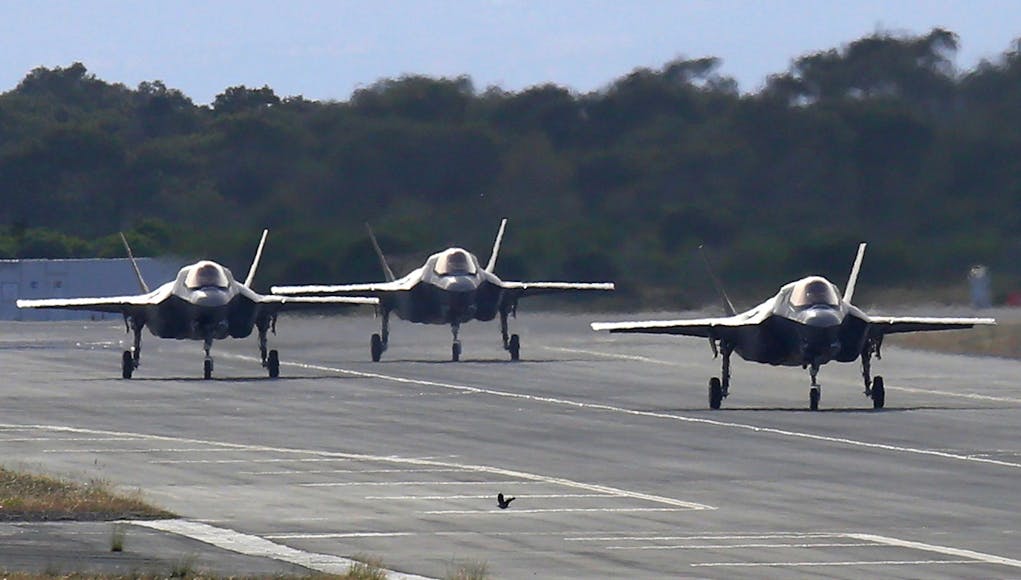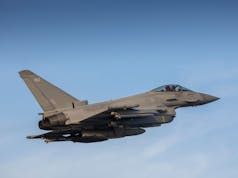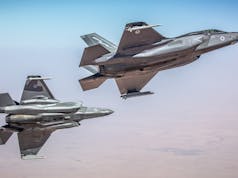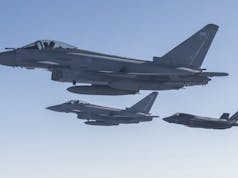Service members from the Royal Netherlands, Royal Norwegian, and United States Air Forces participated in Spartan Lightning, a NATO exercise designed to enhance interoperability, readiness, and maintenance proficiency at Ramstein Air Base, Germany.
A total of seven F-35A Lightning II aircraft took part in the exercise, with pilots and maintainers from all three nations working together to refine key operational and support capabilities.
The exercise provided opportunities for cross-servicing maintenance between nations and involved simulated combat scenarios focused on both offensive and defensive counter-air missions.
According to Lieutenant Colonel Jared Marvin, 5th Combat Training Squadron D Flight Commander, this iteration of Spartan Lightning was unique because it integrated live aircraft and personnel into an event that has traditionally been a simulated exercise. “We flew in seven F-35s to Ramstein for the pilots to participate in the simulator training and for the maintenance personnel to participate in cross-servicing of each other’s airplanes.”
The exercise featured F-35 tactics and intelligence experts facilitating mission planning and executing advanced combat scenarios. These missions allowed participants to apply their individual expertise while working towards collective tactical solutions.
A key objective of Spartan Lightning was advancing NATO’s Agile Combat Employment (ACE) concept, which focuses on increasing the ability to operate from dispersed locations. “We wanted to focus on learning the differences and similarities between how each of our NATO Allies and partners accomplish aircraft maintenance,” said Master Sergeant Chris Bryant of the U.S. 495th Fighter Generation Squadron avionics section chief from RAF Lakenheath.
“This way we can have any of our allies and partners send their fighter aircraft and pilots to locations around the NATO theatre and have the confidence that everyone is on the same page.”
At the UK Defence Journal, we aim to deliver accurate and timely news on defence matters. We rely on the support of readers like you to maintain our independence and high-quality journalism. Please consider making a one-off donation to help us continue our work. Click here to donate. Thank you for your support!














They flew over my house on the way home. Wondered where they’d been
It’s probably the biggest issue Europe is likely to face post Hegseth is what to do about the F35. The aircraft is so integrated into US control people are asking the question will they be able to use it in a future conflict against Russia. County’s like Finland and Poland will be completely dependent on the aircraft for their own defence.
It’s quite interesting that the DOT&E in the USA are now saying that the F15EX can prevail in all likely combat scenarios even against advanced air defences and 5th Gen fighters due to its radar, stand off weapons and electronic counter measures.
The latest Typhoon variants are even more superior than the F15EX and vastly superior to anything the Russians have. Perhaps it’s time for the UK to quietly ditch the F35 and keep it for the carriers and maybe SEAD missions and massively increase the typhoon force. If the US does cancel F35 procurement we may also have a significant gap in production at Wharton that needs to be filled.
It looks highly likely the government will soon be announcing firm target to reach 2.5% on defence by 2030 and 3% by 2035.
If they cancelled procurement for their own forces they ‘might’ continue for the export sales as it is worth billions of dollars of sales. Although I can see Musk might push to harm a competitor
But that would not resolve the possible future issue of relying on US support for their operation and the whim of the orange man and whatever follows him.
I agree that a further Typhoon order makes even more sense now than a month back ( and it made plenty of sense then!), if only to keep production capacity going
I think it’s anyone guess if any of the NATO partners will wish to continue with any further purchases in the event of a US cancellation and the genuine concerns over the US government’s control over the aircraft, Trump wants to sell the aircraft to several Russian and Chinese allies now so its will very quickly become obsolete in terms of high end radar evasion.
Aircraft cost are only kept low by the massive production numbers, those won’t be sustained if the US withdraws. I for one am now quite happy to see us just ramp up a buy for lots more tranche 4 typhoons and stick with the 48 F35B for carrier operations.
The tranche 4 typhoon will be more than capable of dealing with any Russian threat for the foreseeable future until we can get Tempest procured in numbers. Tranche 4 typhoons can do everything we need especially if it’s operating along side a small number of F35’s and drones and its armed with world class stand off weapons like Meteor, SPEAR, storm shadow and FC/ASW.
We can get the RAF back up to 250 airframes with the new budget increases being proposed. That should be our number one priority along with an increase in E7’s and ABM defence.
Who wants to own LM’s spiral costs for a much smaller force?
F35 onwards costs are pretty reasonable given the sophistication given the fleet size…..
I think we are stuck with BRAVO for the carriers.
The Tangerine one may do a lot more damage to the US economy than he realises as his metric action may well collapse US system exports.
Ironically this will be a massive boost for UK headquartered companies as we are still seen as premiere league R&D and have a credible product lineup now.
BAE share pricing is sky rocketing for this reason, given the UK and BAE’s existing permission on the source code it’s not hard to envisage a desperate Lockheed Martin agreeing to a BAE led user group controlling the software for European and other users.
If Elon pulls the plug on F35 then Lockheed Martin is basically gone as a business if it can’t keep international sales on F35 going.